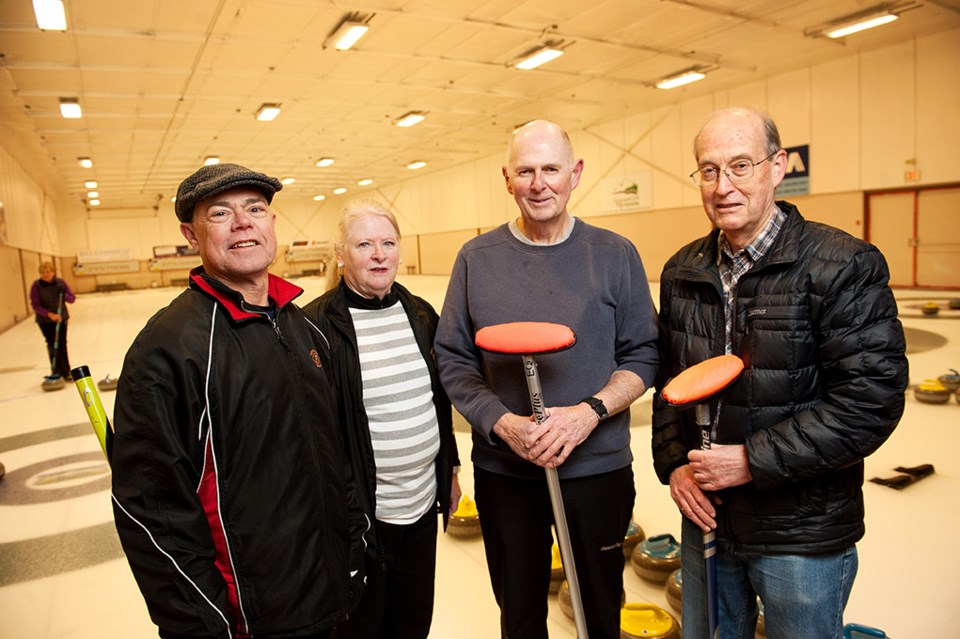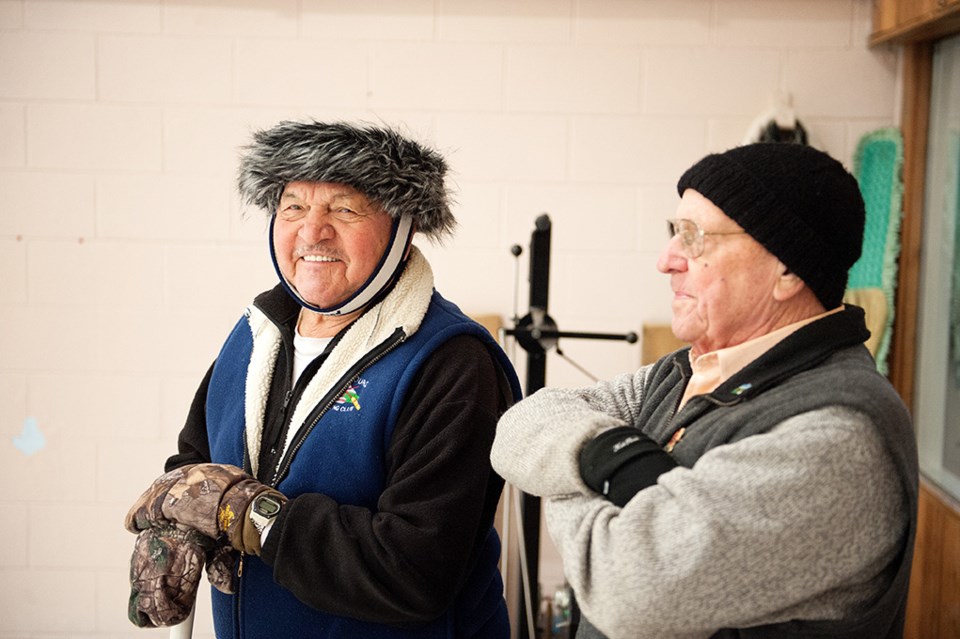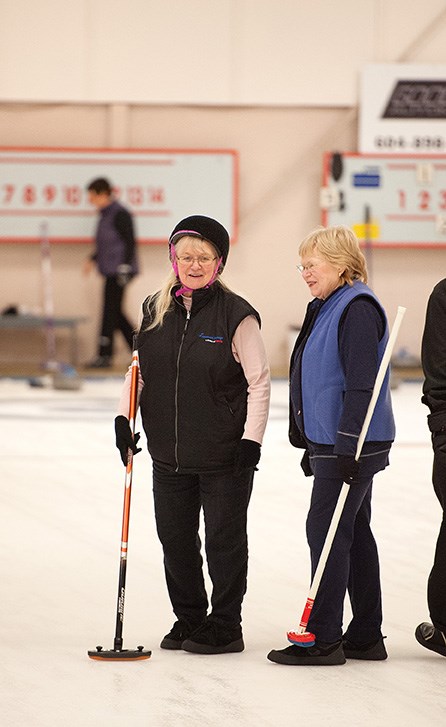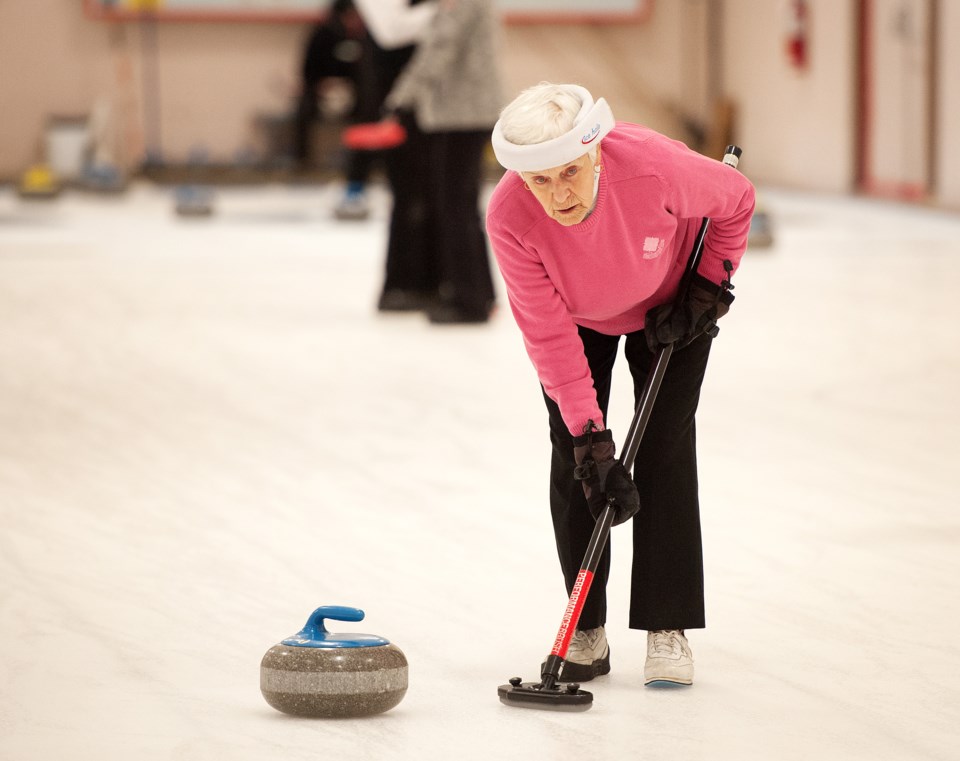It’s a sport for everyone from the age of eight to 88. A broom and some shoes are all you need, says Hal Hughson, who’s been a curler since he was 10 years old. No matter the weather, he enjoys hitting the ice in a dry environment multiple times a week. “I like curling because I haven’t perfected it yet,” he explains.
Hughson joined the Howe Sound Curling Club in the 1980s. Now, it’s the only operational curling club in the Sea to Sky Corridor. He plays for the Seniors League, which recently won their annual tournament against the Gibsons club, by three points. “We get to have the bragging rights for this year,” he said, with a chuckle.

This year, the club introduced stick curling for those with decreased mobility. “We have seniors who can hardly walk up and down the ice, but they use the stick, and they’re deadly,” he says. “And then we have seniors who get right down the hack and throw rocks like the guys on TV.”
But curling isn’t just for seniors — it can be as physically demanding as you want it to be. “You can sweep easy or put your full weight on top of that brush and move as fast as you can,” he says. “Your recovery time has to be quick.”
Fine-tuning your muscles to push the rock to the right place takes skill. “There’s no such thing as hierarchy in curling. Everybody is out there trying to do the same thing — get 40 pounds of granite to the right spot,” he says.
The club continues to thrive today despite all the opportunities for outdoor recreation. Membership numbers dipped over the years, but they continue to attract members today, according to Hughson, who loves the social aspect the most.
Back when Squamish was a smaller town, the club was a meeting place not just to curl but to dance and socialize, he explains.
Eric Andersen began curling as a Grade 8 in Howe Sound Secondary School, which at the time was walking distance from the club. But in the early ‘80s, a fire destroyed the wooden rink and it took almost five years for the community to rally and build the current facility.
“Once you get introduced to the sport you can come back 20 years later and it’s still imprinted on you,” he says of playing today. “The other thing is that I can be curling against 80-year-old competitors and lose.”
Andersen says he’s an example of the importance of youth and senior programs and points out the community role of the private club. “If we lost the curling club, we would lose winter recreation for seniors,” he explains, noting the rink is facing a costly retrofit and high BC Hydro bills.

He encourages finding ways to share the space with other user groups, like roller derby in the summer.
Over the years, demographic influences led to changes in the community: The rink used to be the only ice arena and meeting place for workers in the town like Woodfibre, BC Rail, the hospital, and teachers. “These were communities unto themselves that were engaged in extracurricular sports,” Andersen says. “A key change is that large employers have disappeared.”
However, he notes there’s been substantial continuity with those involved. One of those people is Hilary Fisher, club board member and retired teacher, who moved to Squamish in 1974. “Back then, everybody curled. There was nothing else to do here compared to now,” she says, acknowledging that clubs around the province are struggling today.
At the time, a real cross-section of the community curled and it’s how she met people outside of teaching. Now, Fisher partners with those new to the game — the same way she learned years ago.
“What was great about it then and still is a really big part of my life, is the social aspect,” she says. “After the game, you always go for a drink with the other team. It’s mandatory.”
Unlike most other sports, both teams of four sit together after the game. “For the most part, the golf club knows on league nights all the tables are set up for eight people,” Fisher says, noting seniors get a long table set up for coffee in the mornings. “Curling is just something that gets into your blood.”
The season runs from October to March with a variety of options for leagues, lessons, and outside bookings. There are over 200 members, including all leagues; juniors, ladies, mens, mixed, seniors, commercial, and the recent addition of stick curling.

Brenda Sims is the current president of the club and has been curling for over 50 years. “We would like to see a lot more people come out and try the sport,” she acknowledges, noting lessons are available with trained instructors for anybody who wants to come out. “Equipment is provided for them so they can try it without an expense,” she adds.
The social league meets on Friday nights: It’s open to the public for anyone who wants to learn. The club is seeing more outside bookings with groups such as from Backcountry Brewing, who take the opportunity to get a 45-minute lesson then compete against each other, Sims says.
Sim — who is on the ice with the seniors on Tuesday and Thursday mornings — was looking forward to the Masters Mixed Bonspiel Feb. 21 for highly-skilled members over 60 when she spoke to The Chief the week before the event. “We have a lot of competitive teams from the Lower Mainland come up for this one-day event,” she explains. “It’s a bit of a challenge.”
Curling really is a sport for anybody, Sims notes. “Any age group can get involved with curling at any level,” she says. “Even if you just wanna have some fun.”
For more information, visit howesoundcurl.com/.



